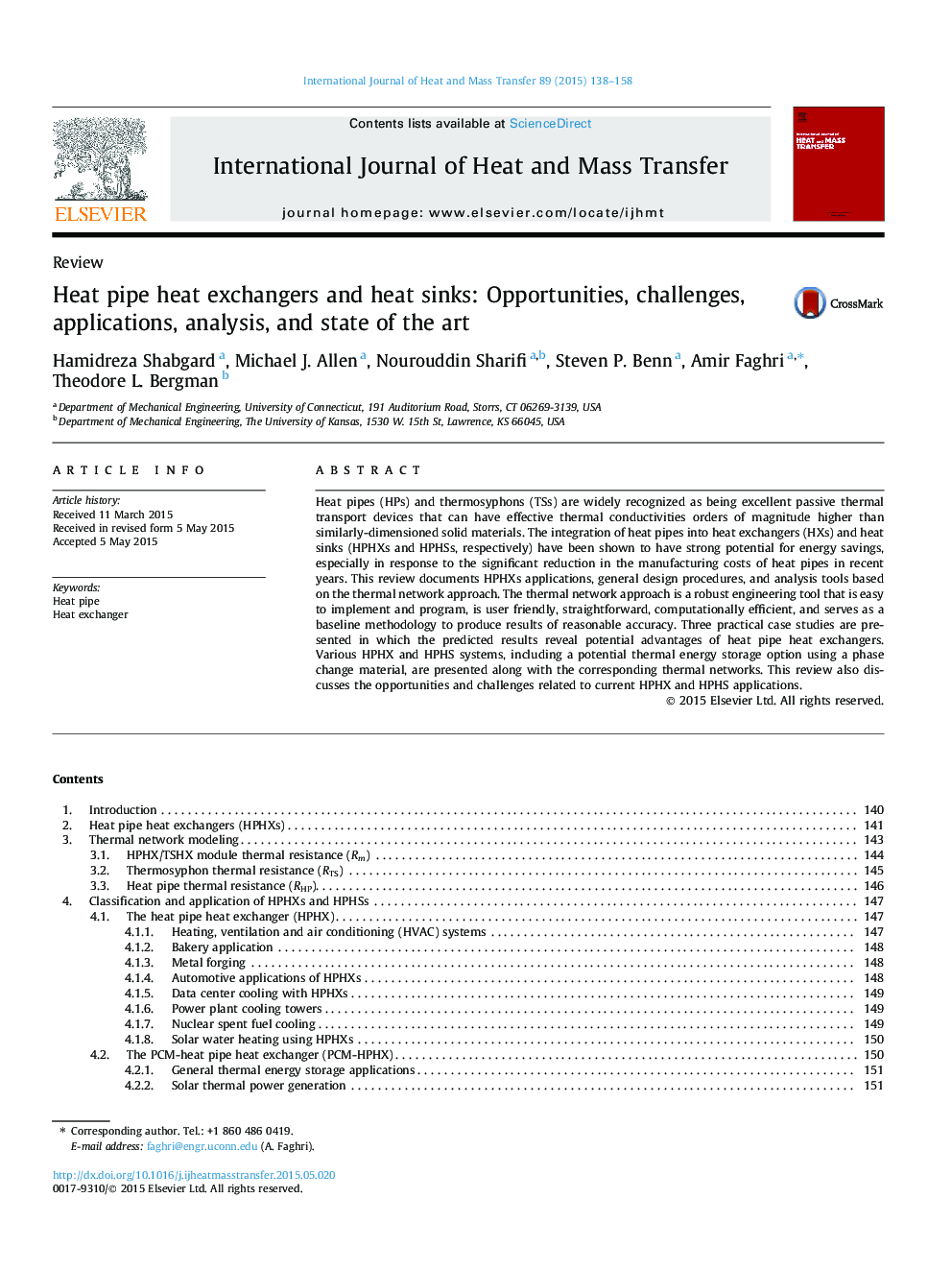| Article ID | Journal | Published Year | Pages | File Type |
|---|---|---|---|---|
| 7056457 | International Journal of Heat and Mass Transfer | 2015 | 21 Pages |
Abstract
Heat pipes (HPs) and thermosyphons (TSs) are widely recognized as being excellent passive thermal transport devices that can have effective thermal conductivities orders of magnitude higher than similarly-dimensioned solid materials. The integration of heat pipes into heat exchangers (HXs) and heat sinks (HPHXs and HPHSs, respectively) have been shown to have strong potential for energy savings, especially in response to the significant reduction in the manufacturing costs of heat pipes in recent years. This review documents HPHXs applications, general design procedures, and analysis tools based on the thermal network approach. The thermal network approach is a robust engineering tool that is easy to implement and program, is user friendly, straightforward, computationally efficient, and serves as a baseline methodology to produce results of reasonable accuracy. Three practical case studies are presented in which the predicted results reveal potential advantages of heat pipe heat exchangers. Various HPHX and HPHS systems, including a potential thermal energy storage option using a phase change material, are presented along with the corresponding thermal networks. This review also discusses the opportunities and challenges related to current HPHX and HPHS applications.
Keywords
Related Topics
Physical Sciences and Engineering
Chemical Engineering
Fluid Flow and Transfer Processes
Authors
Hamidreza Shabgard, Michael J. Allen, Nourouddin Sharifi, Steven P. Benn, Amir Faghri, Theodore L. Bergman,
